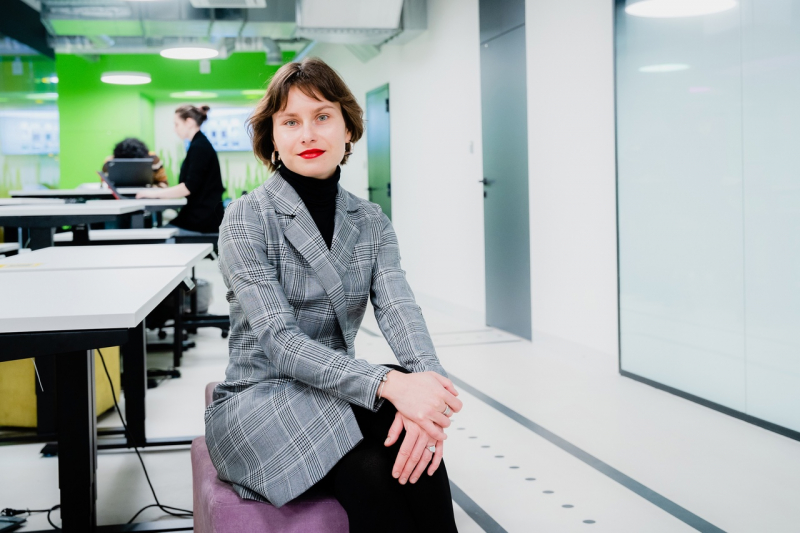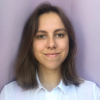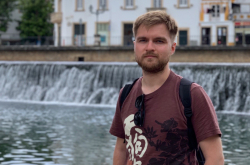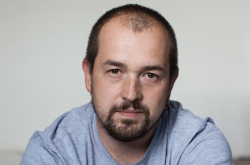Finding your path in science
Let’s talk about your education. Where did you study before coming to ITMO?
In 2010, I graduated from the Faculty of Biology at Lomonosov Moscow State University (LMSU). Starting in my fourth year, I had begun working at a lab at the Virology Department, and three years later I defended my PhD thesis. Then, I stayed at the department as an experimental biologist – I worked in genetic engineering, biotechnologies, and molecular biology; created “new” viruses and vaccines based on them. In the bioinformatics’ lingo, I busied myself with “wet” biology. In 2014, I was invited to do an internship and then a postdoc in Dundee, Scotland, at James Hutton Institute, one of the world’s largest centers for plant biology. Having completed my postdoc in three years, I came back home to Moscow and felt that I needed a change.
Why did you feel that way?
For ten years, I had been engaged in one rather narrow field, conducting research in plant virology, virus biotechnology, producing nanoparticles and next-gen vaccines (which is a highly relevant topic now). I was sure I needed to grow, to find a breath of fresh air in science. By then, I already knew that the world of biology is vast and diverse and I felt a need to explore it further. There are currently many scattered facts of which we still don’t have a complete systemic understanding. I often felt dissatisfied with this lack of deep systematic analysis, which I was actually always drawn to.
It was not easy to find a new field – I tried my hand at pharma, working at the R&D department of a major pharmaceutical company in Moscow that did quality control for GMP produced drugs. But this very experience proved to me that my true interest lies in fundamental research.
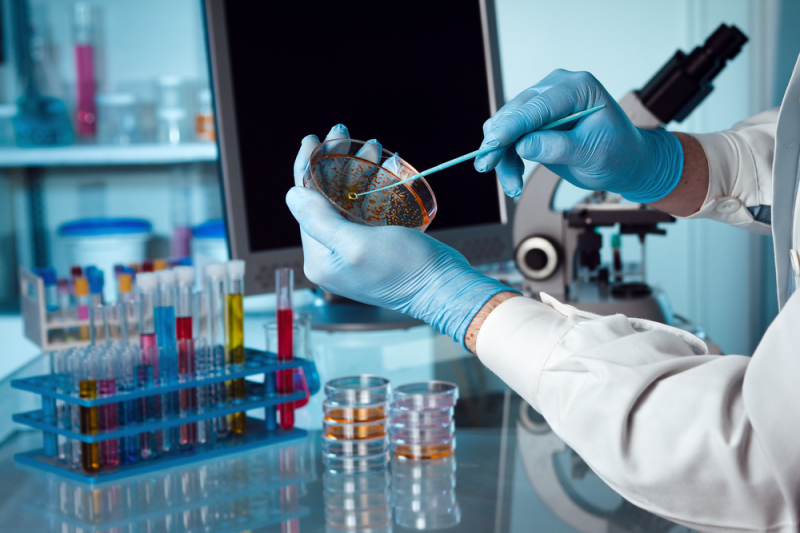
How did you get into bioinformatics?
It might have been mere chance, but one that was bound to happen. In Scotland, one of my colleagues, possibly after noticing my interest, asked if I wanted to study bioinformatics. To be completely honest, back then I had a very brief acquaintance with it but upon returning to Moscow, I developed an interest. At first, I found some of St. Petersburg State University’s online courses on the subject, and soon I understood that it was exactly what I needed! Systematization, all types of data analysis, computer modelling, forecasts, and much more!
Had you studied maths and statistics before that?
Just like everyone else, I took advanced maths and mathematical methods in biology during my studies at LMSU. Only now can I clearly see why maths was one of the exam subjects for applicants at the Faculty of Biology. But when I was only getting into bioinformatics while doing those online courses, I understood that I need fundamental education in this field – so I started looking for a suitable program.

What were your options?
I was already an accomplished professional with a PhD degree. I only needed to add bioinformatics to my background in biology. I didn’t want to spend five more years in a Specialist’s or a PhD program – which made me cross out LMSU’s Faculty of Bioinformatics. There were no programs for biologists in Moscow and only further education courses at the Bioinformatics Institute in St. Pete. The search was not easy, but I could not drop it. Then I stumbled upon an announcement of ITMO’s new Master’s program – which made me really happy! Finally, I got what I wanted: full-scale higher education and a serious curriculum with loads of cutting-edge materials. I got into the first cohort of the program thanks to a portfolio competition.
Needless to say, my friends and colleagues were surprised with my decision to leave everything behind and start anew in a different city – that is a rapid change! But my wishes grew into goals, which is a point of no return, and, most importantly, I had my family’s support. That was how I came to ITMO.
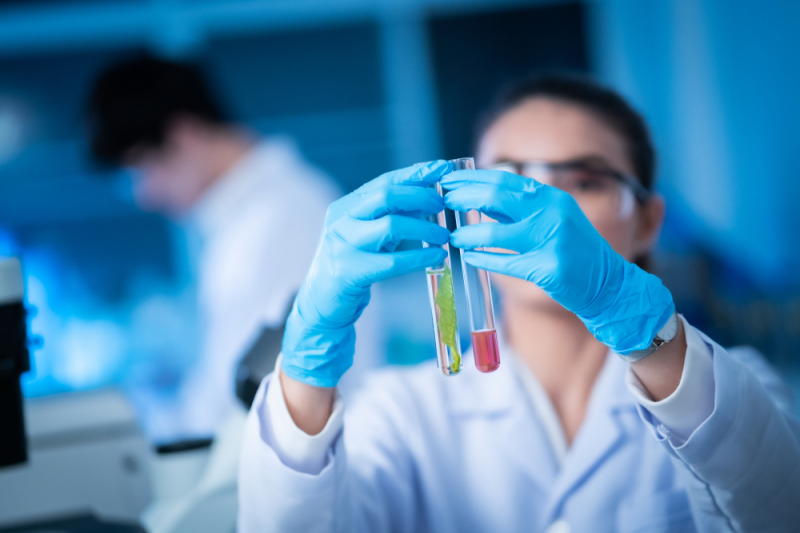
On studying at ITMO
What do you remember most about your studies?
It’s hard to single something out. Every course was unique and necessary – everything was of use. I can see now that at the program we were given a very comprehensive overview of what bioinformatics can accomplish. Probably, the most important thing was that theory was combined with loads of practice: never-ending home assignments and strict deadlines. It was a completely reasonable approach, for that way we had to quickly find our own solutions and communicate with each other.
Who were your groupmates?
We were a very diverse team: biologists, programmers, biotechnologists, an engineer, a doctor, a soil analyst – each had their own backstory. The tasks we were set brought us together on personal and professional levels. We “merged” into something new, which was not easy, but turned out to be extremely enriching for all of us. I think it is very important for bioinformatics as a field. People come here from many, sometimes wildly different, branches of science and it is important to find a way to negotiate and speak one language. That was what we were able to do in our Master’s program.
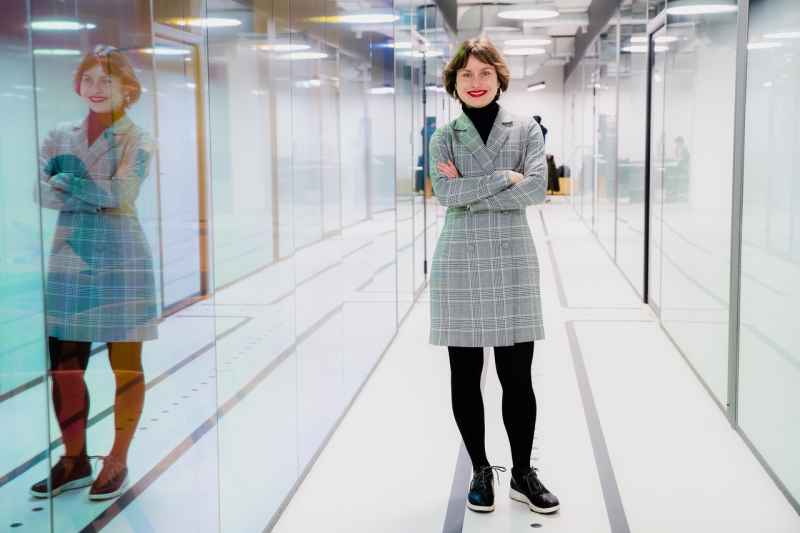
What do you think helped such different people achieve this level of understanding?
It was, above all else, friendship and a will to learn, grow, and do what you love. There were almost no students who dropped out of the program, we all came there consciously and successfully graduated.
What did you do apart from your studies?
Alongside my Master’s studies, I worked as a researcher at the Bioinformatics Research Center of Pavlov University, gaining practical experience in the field. I brought some of the problems we solved at the center to ITMO, so my projects were based on actual medical practice. For instance, one of my course projects included a study of a clinical case of chromothripsis. As a result, I wrote my thesis supervised by Nikita Alexeev and Sergey Aganezov on chromothripsis and complex chromosomal rearrangements, which I first learned about at the Center.
About the Bioinformatics Research Center of Pavlov University
What do you do now?
When I was on the verge of graduation, I had to choose where to go next – to stay in St. Petersburg or go back home to Moscow. I received a number of offers from various institutions in both cities. But in March, I was offered to head the Bioinformatics Research Center of Pavlov University, which was extremely appealing to me – so I immediately said yes, even though I was aware of the responsibility.
What does the center do?
Unlike some wet labs, the center is not focused on any one topic. There are many different fields studied at Pavlov University and there is also a great variety of biological labs that make use of the methods of bioinformatics, which means our tasks are very diverse. And all of them come from the actual clinical practice, so our work is very interesting and diverse. Therapists and biologists these days need new methods to help them look at a problem from a different angle and, potentially, provide forecasts of pathogenesis and treatment methods. All of this means that as bioinformatics researchers, we also need to constantly grow and stay informed in many topics.
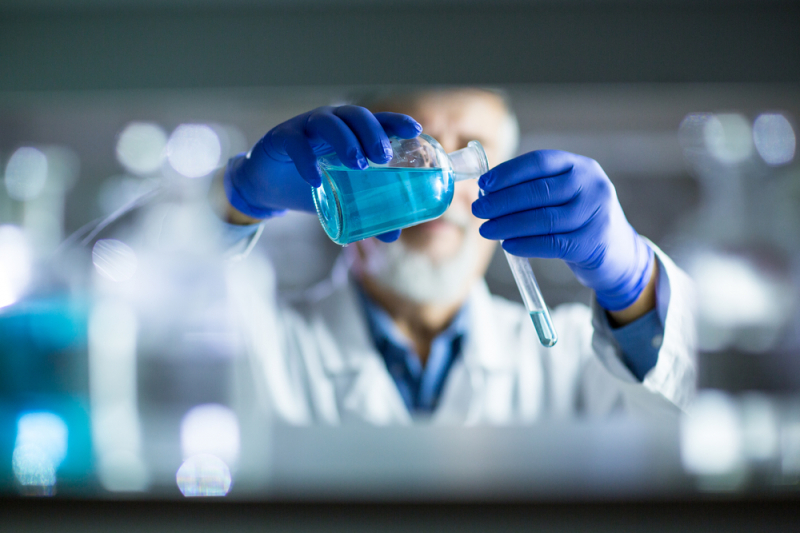
So, bioinformatics is a highly applied field?
We can’t actually treat patients like therapists do, we can only advise on the treatment. In this sense, bioinformatics is a fundamental discipline. For instance, we have a patient and a specific mutation. Using our methods, we can say what this mutation means in this particular case, what are its potential consequences and what is the fundamental problem behind it.
It is also important that the therapist then uses this data to find a new angle on the problem – in this particular case and for the illness generally.
That’s why bioinformatics specialists work at the intersection of many disciplines to analyse a problem and then interpret this analysis to therapists. This is highly in demand in contemporary healthcare – which is evidenced by the emergence of our center.
In my opinion, science has now become interdisciplinary and will be getting more and more so, meaning that biologists, physicists, mathematicians, and doctors will have to work in close collaboration. Isn’t a complex, multi-angle, synthetic analysis of a problem with contemporary information technologies a possibility for breakthroughs in science? The times of narrow specializations have ended, now is the age of complex and broad approach meant to synthesize new solutions and understanding.
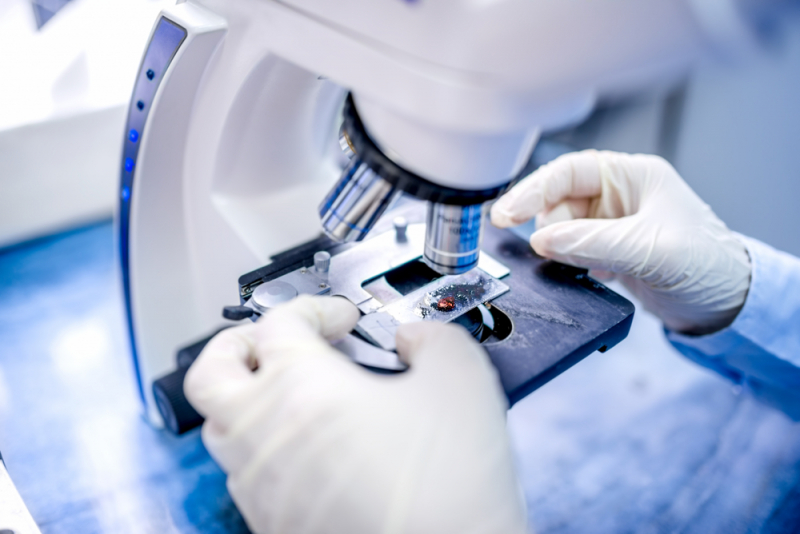
Did ITMO contribute to your outlook on science?
Naturally, it did and that is what I am grateful for. The most important trait gained from my studies here is a wide scientific outlook. We had professors from many world-renowned schools and universities. We can now apply our knowledge in completely different fields. ITMO gave me just the things I first transferred into bioinformatics for.
For instance, one of our subjects at the program was systems biology. It is a great approach that brings together many different specialists. Biologists work out the hypothesis, bioinformatics programmers create algorithmic solutions and mathematical models, then bioinformatics analysts process a lot of known data: genomic, proteomic, cell, etc. All of this means that biologists will run their experiments not on 10,000 molecules but on the ten most important ones. Such an algorithm helps to considerably narrow the search field and make the experiment more targeted, acquiring a significant result.
Do you integrate interdisciplinary methods at the center?
Bioinformatics IS interdisciplinarity. We use approaches and knowledge from completely different fields and try to develop the necessary methods with various specialists to find complex solutions to our problems.
Our approach is supported by Sergey Bagnenko, Rector of Pavlov University. It is great to work in such a friendly environment. Currently, we still use mostly standard methods: NSG data analysis, various mutation effects prediction – that is what the current clinical practice demands.
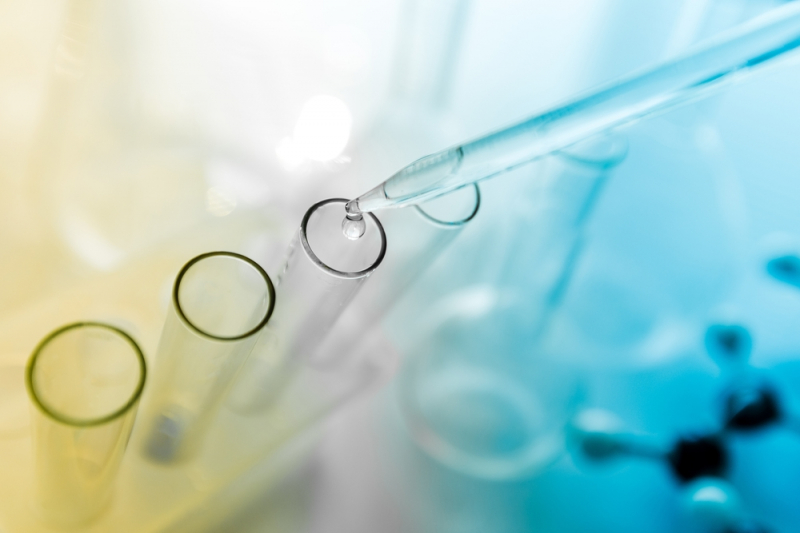
At the same time, we are planning to employ the methods I learned at ITMO, such as molecular modelling and molecular dynamics, and, perhaps at a later time, Drug Discovery, which will be relevant at Pavlov University. We try to think strategically, as we want our center to be multifunctional to adhere to all the various clinical and biological demands of the university.
You’ve mentioned bioinformatics methods quite a few times. Can you give us a few examples?
It’s hard to be concise. There are rather various types – for instance, mathematical or statistical algorithms that can be used to analyze sequences of genes or proteins. Or methods of structural bioinformatics and molecular dynamics, where we also apply knowledge of physical laws and quantum mechanics. All of them are manifested in computer software.
A big part of bioinformatics is analysis, the science of data and its interpretation, whereas the other side of it is developing algorithms and software that can be used for analysis. This is mainly for those who came from programming. As a biologist, I am rather one of the analysts who use these developed methods.
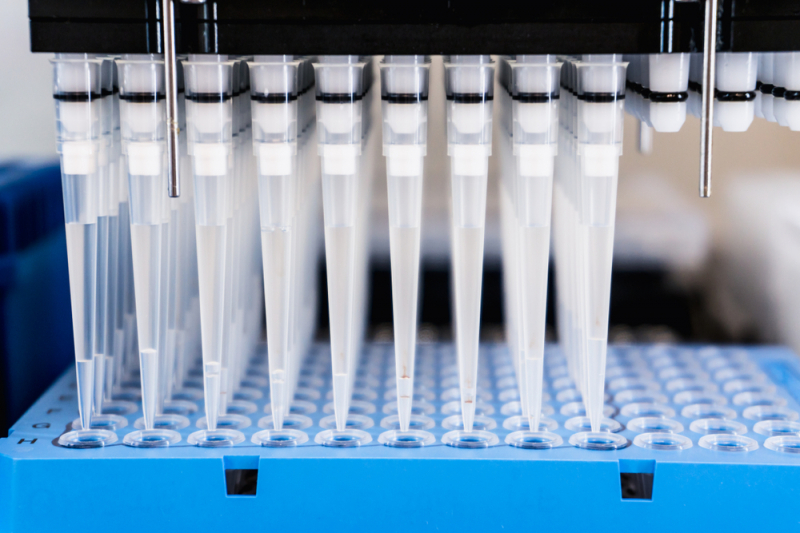
Advice for students
What would you say to students and young specialists interested in working and building their career at the intersection of sciences?
I would wish them to want for something very-very much and to understand what it is that they want. Then you simply need to turn your wishes into goals. As a Russian saying goes, what the eyes fear, the hands do. The key is to keep growing, never abandon your work, and never take a step back even if you don’t succeed at first – good opportunities come with challenges.
To students of bioinformatics, I would recommend learning each course with great attention in order to become broad-minded specialists – you never know what tasks you will need to solve in the future. Also, you should read more articles and literature in the field of fundamental biology to understand what is actually behind those formulas and the code.
Are there any opportunities for students at your center?
We didn’t have the chance to think about it yet, but it’s an interesting idea that I would fully support! Hopefully, we will maintain a close connection with ITMO. We are, naturally, interested in wonderful specialists and where else would they come from? Students will benefit from dipping into the world of medical bioinformatics, while it will be pleasant for us to communicate with them and assist in their careers as young scientists.
I want to use this wonderful opportunity and thank my second alma mater, ITMO, and the whole outstanding team that brought me up as a new specialist. All that I have now, everything I know about bioinformatics, I know thanks to you. I hope that we will develop this field together. Thank you!
